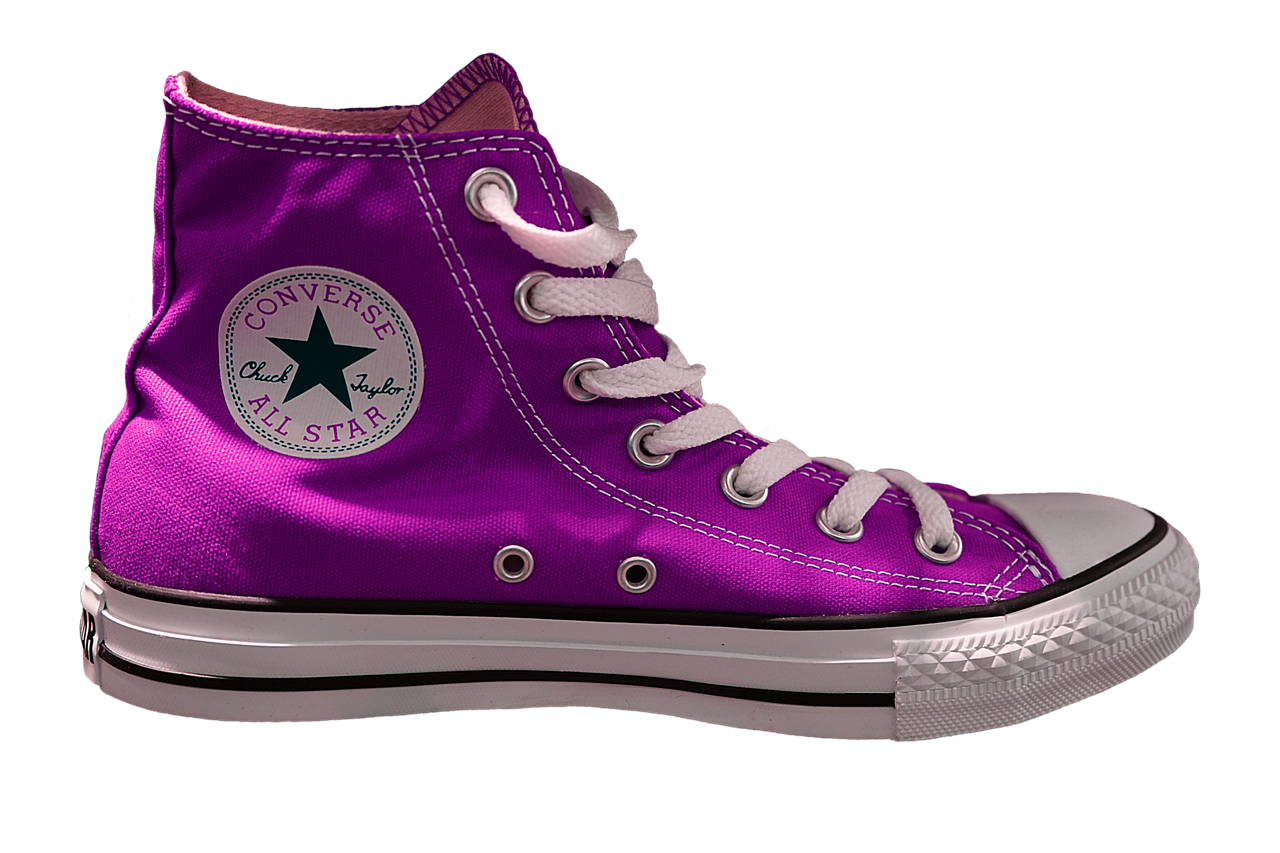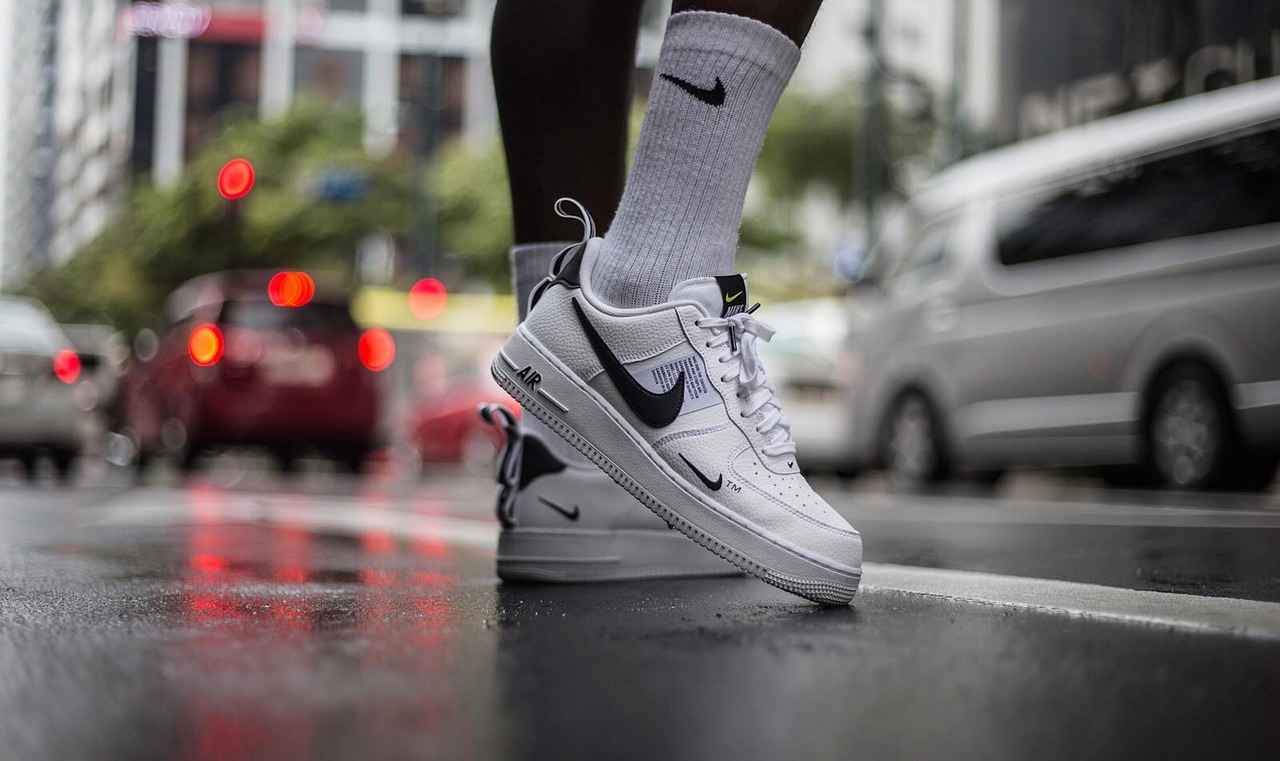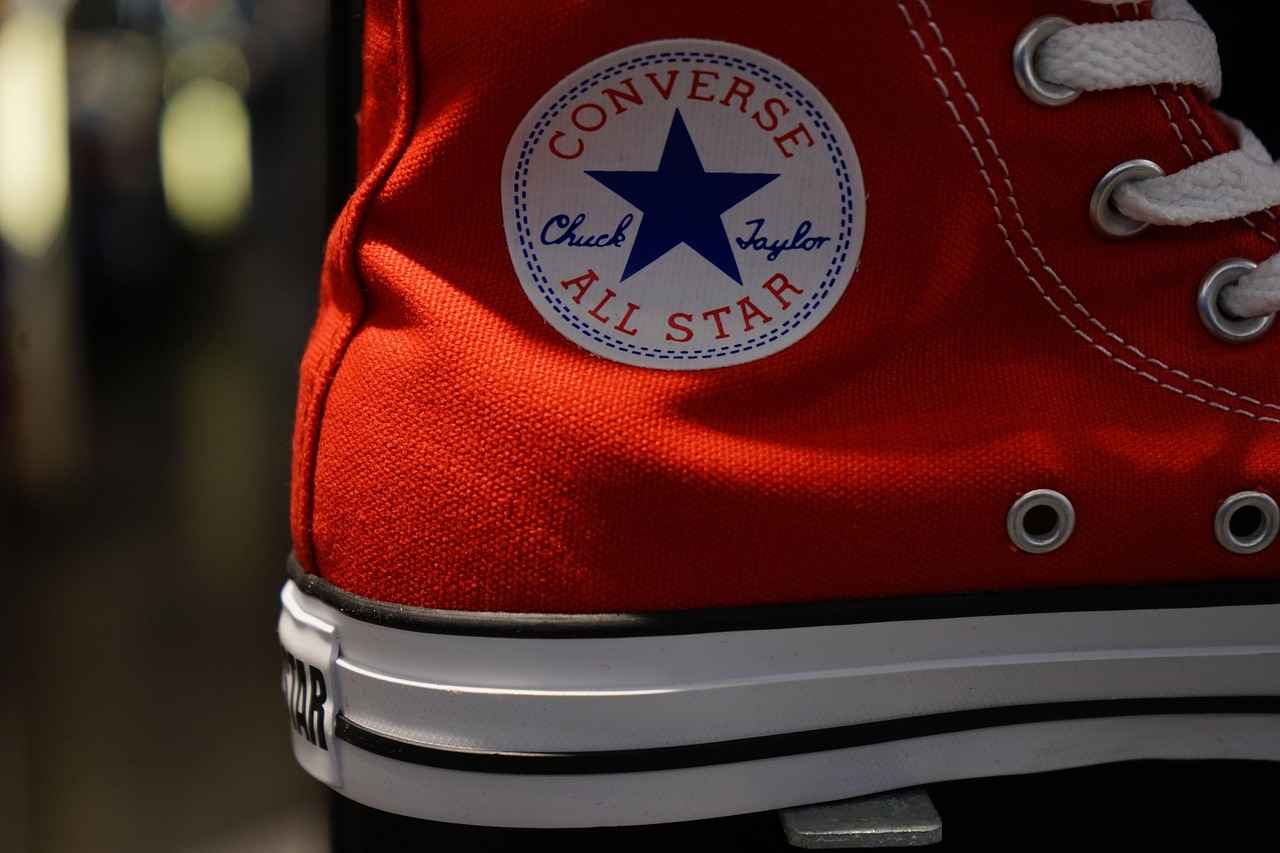This article explores the enduring appeal of New Balance shoes, examining their blend of comfort, style, and innovation that resonates with diverse age groups and lifestyles.
The History of New Balance
Founded in 1906, New Balance began as a manufacturer of arch supports and has since evolved into a global footwear giant. Understanding its origins sheds light on the brand’s commitment to quality and performance, which has kept it relevant for over a century.
Quality Craftsmanship and Innovation
New Balance is synonymous with high-quality materials and innovative technologies. Each shoe is designed to meet the needs of modern consumers while ensuring durability and comfort. This dedication to craftsmanship sets the brand apart in a crowded market.
- Technological Advancements in Footwear: The integration of advanced technologies such as Fresh Foam and FuelCell enhances both performance and comfort, attracting athletes and casual wearers alike.
- Impact of Research and Development: Significant investments in R&D allow New Balance to stay ahead of trends and consumer expectations, ensuring they remain competitive.
- Collaborations with Designers and Influencers: Strategic partnerships with renowned designers help New Balance tap into new audiences, blending fashion with functionality.
Commitment to Sustainability
New Balance’s focus on sustainability resonates with environmentally conscious consumers. Their commitment to reducing carbon footprints through eco-friendly practices showcases a forward-thinking approach in today’s market.
Target Demographics and Market Strategy
New Balance effectively targets a wide range of demographics, from serious athletes to fashion-conscious individuals. By analyzing consumer preferences, they tailor offerings to meet the unique needs of various age groups, enhancing customer loyalty.
Global Market Presence
The brand’s international presence allows it to adapt to regional trends while maintaining a consistent identity, solidifying its relevance across cultures.
Iconic Models and Their Cultural Impact
Certain models, like the 990 series, have transcended mere footwear to become cultural icons, influencing fashion trends globally. Limited edition releases create buzz and exclusivity, appealing to collectors and trendsetters alike.
The Role of Social Media in Brand Engagement
Social media is crucial for New Balance’s marketing strategy, allowing direct engagement with consumers. Encouraging user-generated content fosters community and enhances brand loyalty.
Influencer Partnerships and Brand Ambassadors
Strategic partnerships with influencers amplify New Balance’s reach, effectively targeting younger audiences and showcasing the brand’s versatility in lifestyle and performance contexts.

The History of New Balance
The history of New Balance is a fascinating journey that reflects its commitment to quality and performance. Founded in 1906 as a small arch support company in Boston, New Balance has evolved significantly over the decades, adapting to the changing needs of athletes and casual wearers alike. Understanding its origins provides valuable insight into how the brand has maintained its relevance in a highly competitive market.
Initially, New Balance focused on creating products that enhanced the comfort and support of footwear, catering primarily to athletes. The brand’s early innovation included the introduction of the first running shoe with a flexible arch support. This dedication to craftsmanship laid the groundwork for future advancements, as New Balance continued to prioritize functionality alongside style.
Throughout the years, New Balance has embraced various technological innovations, significantly enhancing the performance of its footwear. The introduction of the 990 series in 1982 marked a pivotal moment in the brand’s history, combining cutting-edge technology with a classic aesthetic. This model not only became a favorite among serious runners but also transitioned into a cultural icon, showcasing the brand’s ability to blend performance with fashion.
Moreover, New Balance’s commitment to local manufacturing in the United States has set it apart from competitors who primarily outsource production. This dedication to quality craftsmanship not only supports local economies but also reinforces the brand’s promise of durability and performance. By maintaining a portion of its production in the U.S., New Balance has built a reputation for creating high-quality products that resonate with consumers seeking authenticity.
As the company continues to evolve, its focus on sustainability and innovation remains at the forefront. By integrating eco-friendly practices and materials into its production processes, New Balance appeals to a growing demographic of environmentally conscious consumers, ensuring its legacy continues for generations to come.

Quality Craftsmanship and Innovation
New Balance has established itself as a leader in the athletic footwear industry, primarily due to its unwavering commitment to quality craftsmanship and innovation. The brand has continually pushed the boundaries of what consumers expect from their footwear, ensuring that every pair of shoes is not only stylish but also built to last.
At the core of New Balance’s philosophy is the use of high-quality materials. Each shoe is crafted with precision, utilizing premium fabrics and advanced components that enhance both performance and durability. This meticulous attention to detail ensures that New Balance shoes can withstand the rigors of daily wear, appealing to both serious athletes and casual wearers alike.
Furthermore, New Balance is at the forefront of technological advancements in footwear. The brand has developed proprietary technologies such as Fresh Foam and FuelCell, which are designed to provide superior cushioning and energy return. These innovations not only improve athletic performance but also offer unmatched comfort for everyday use, making them a popular choice among diverse consumer demographics.
New Balance’s commitment to research and development plays a crucial role in maintaining its competitive edge. By investing heavily in R&D, the brand can stay ahead of market trends and consumer expectations, continuously refining its products to meet the evolving needs of modern consumers.
In addition to performance enhancements, New Balance also emphasizes sustainability in its production processes. The brand has made significant strides in reducing its environmental impact, utilizing eco-friendly materials and sustainable manufacturing practices. This dedication to sustainability resonates with a growing segment of environmentally conscious consumers, further solidifying New Balance’s reputation as a responsible brand.
In summary, New Balance’s blend of quality craftsmanship and innovative technologies ensures that each shoe is tailored to meet the demands of today’s consumers. By prioritizing durability, comfort, and sustainability, New Balance remains a relevant and trusted choice across generations.
Technological Advancements in Footwear
The world of footwear is constantly evolving, and New Balance stands at the forefront of this transformation through its commitment to technological advancements. The brand’s innovative approach is evident in its use of cutting-edge materials and designs, which not only enhance performance but also ensure maximum comfort for users.
One of the standout technologies is Fresh Foam, a cushioning system that provides a soft yet responsive feel underfoot. This technology is particularly favored by runners who seek a balance between support and flexibility. The unique geometric shape of the Fresh Foam midsole adapts to the foot’s natural movement, making it ideal for both high-intensity workouts and casual wear.
Another significant innovation is the FuelCell technology, designed to deliver a propulsive feel that helps athletes achieve their best performance. This foam is engineered to provide a high-energy return, making it perfect for those who push their limits during training or competition. The combination of these technologies makes New Balance shoes not just functional but also a preferred choice for both serious athletes and casual users.
New Balance’s commitment to research and development ensures that they remain ahead of the curve. By investing in understanding consumer needs and trends, the brand continually refines its technologies, ensuring that each new model meets the evolving expectations of its diverse customer base.
Furthermore, the brand’s collaboration with sports scientists and footwear experts allows for the integration of advanced biomechanics into their designs. This scientific approach not only enhances performance but also reduces the risk of injury, making New Balance a trusted choice for those serious about their fitness.
In summary, the integration of technologies like Fresh Foam and FuelCell showcases New Balance’s dedication to enhancing the athletic experience. By focusing on innovation and comfort, they successfully attract a wide range of consumers, from elite athletes to everyday wearers, ensuring their shoes remain relevant across generations.
Impact of Research and Development
In the fast-evolving world of footwear, New Balance stands out due to its substantial investment in research and development. This commitment not only allows the brand to keep pace with current trends but also to anticipate and shape future consumer expectations. By prioritizing R&D, New Balance ensures that its products are not only stylish but also functional and high-performing.
One of the key aspects of New Balance’s R&D strategy is its focus on innovation. The company consistently explores new materials and technologies, which has led to the development of proprietary systems such as Fresh Foam and FuelCell. These technologies enhance the overall performance of their footwear, providing superior cushioning and energy return, which appeals to both athletes and everyday users.
| Technology | Benefits |
|---|---|
| Fresh Foam | Provides plush cushioning and support for long-lasting comfort. |
| FuelCell | Delivers a high-rebound experience, enhancing speed and performance. |
Moreover, New Balance leverages consumer feedback and market analysis to refine its offerings. This approach not only helps in understanding the needs of different demographics but also fosters a sense of community among its users. By actively engaging with their customer base, New Balance can tailor its products to meet specific demands, ensuring that they remain relevant and sought-after in a competitive market.
Additionally, the brand collaborates with sports scientists and industry experts to validate their innovations, ensuring that each product is backed by scientific research. This rigorous testing process reinforces consumer confidence in the brand, establishing New Balance as a leader in both performance and style.
In conclusion, New Balance’s unwavering commitment to research and development not only enhances its product line but also solidifies its position in the footwear industry. By staying ahead of trends and continuously innovating, the brand successfully meets the evolving expectations of consumers across generations.
Collaborations with Designers and Influencers
have become a cornerstone of New Balance’s marketing strategy, enabling the brand to connect with a broader audience while maintaining its core values of quality and performance. By partnering with renowned designers and influential figures in the fashion world, New Balance has successfully blended fashion with functionality, creating products that appeal to the younger generations.
These strategic partnerships not only enhance the brand’s visibility but also allow New Balance to tap into the unique aesthetics and creative insights that designers bring. For instance, collaborations with high-profile designers have resulted in limited-edition releases that generate excitement and exclusivity among consumers. This approach has proven effective in attracting fashion-conscious individuals who seek more than just athletic footwear; they desire products that resonate with their personal style.
Moreover, influencers play a crucial role in shaping consumer perceptions and trends. By leveraging the social media presence of these influencers, New Balance can reach diverse audiences who may not have previously considered the brand. The authentic endorsements from these figures create a sense of trust and relatability, making it easier for younger consumers to engage with and embrace New Balance products.
In addition to enhancing brand appeal, these collaborations often lead to innovative designs that incorporate cutting-edge materials and technologies. This integration of style and performance not only meets the demands of modern consumers but also positions New Balance as a leader in the competitive footwear market.
Ultimately, the combination of strategic partnerships with designers and influencers allows New Balance to remain relevant and appealing across generations. By continuously evolving its offerings while staying true to its heritage, the brand successfully captures the essence of contemporary fashion and functionality.
Commitment to Sustainability
In today’s world, the emphasis on sustainability has become more critical than ever, and New Balance is at the forefront of this movement. The brand’s commitment to environmental stewardship resonates deeply with consumers who are increasingly concerned about their ecological impact. Through a series of innovative and eco-friendly practices, New Balance is not just selling shoes; they are promoting a sustainable lifestyle.
One of the most significant ways New Balance demonstrates its dedication to sustainability is through the use of recycled materials in their products. For instance, many of their shoe models incorporate recycled polyester and rubber, which significantly reduces the consumption of virgin materials and helps divert waste from landfills. This initiative not only lowers the carbon footprint of their manufacturing processes but also appeals to consumers who prioritize eco-conscious brands.
Additionally, New Balance has implemented energy-efficient manufacturing processes. By optimizing production techniques and utilizing renewable energy sources, the company aims to minimize its overall carbon emissions. This commitment to cleaner production methods showcases New Balance’s recognition of its role in combating climate change.
- Transparency: New Balance is dedicated to maintaining transparency in its sustainability efforts, providing consumers with detailed information about the materials used and the environmental impact of their products.
- Community Involvement: The brand actively engages with local communities through various initiatives, including sponsoring environmental clean-up events and supporting organizations focused on sustainability.
- Product Lifecycle: New Balance encourages consumers to recycle their old shoes through programs that promote the circular economy, further extending the lifecycle of their products.
By focusing on sustainability, New Balance not only meets the demands of environmentally conscious consumers but also sets a benchmark for the footwear industry. Their efforts highlight a broader trend where brands must adapt to the evolving values of their customers, proving that commitment to the planet can go hand in hand with quality and style.

Target Demographics and Market Strategy
New Balance has established itself as a leading brand in the athletic footwear market by effectively targeting a diverse range of demographics. This strategic approach ensures that the brand appeals not only to serious athletes but also to fashion-conscious individuals who prioritize style and comfort.
The brand’s marketing strategy hinges on a deep understanding of its target demographics. By segmenting its audience into various categories, New Balance can tailor its messaging and product offerings to meet the unique needs of each group. For instance, serious athletes are drawn to the brand’s performance-driven technologies and high-quality materials, while younger consumers often seek trendy designs that can seamlessly transition from the gym to casual outings.
One of the key elements of New Balance’s success is its commitment to quality craftsmanship and innovation. The brand continuously invests in research and development, ensuring that its products incorporate the latest advancements in footwear technology. This dedication not only enhances performance for athletes but also elevates the everyday wearability of its shoes, appealing to a broader audience.
Moreover, New Balance has recognized the importance of collaborations with designers and influencers. These strategic partnerships allow the brand to tap into new markets and create buzz around exclusive releases. By blending fashion with functionality, New Balance captures the attention of younger generations who value both aesthetics and performance in their footwear choices.
Another significant aspect of New Balance’s marketing strategy is its focus on sustainability. As consumers increasingly prioritize environmentally friendly practices, New Balance’s commitment to reducing its carbon footprint resonates with eco-conscious individuals. This alignment with consumer values further strengthens the brand’s appeal across various demographics.
In summary, New Balance’s ability to effectively target a wide range of demographics stems from its innovative approach, commitment to quality, and strategic partnerships. By understanding and addressing the diverse needs of its consumers, the brand continues to maintain its relevance and popularity in the competitive footwear market.
Understanding Consumer Preferences
Understanding consumer preferences is essential for any brand looking to thrive in today’s competitive market. New Balance has effectively harnessed this knowledge to create products that resonate with a diverse audience, spanning various age groups and lifestyles. By meticulously analyzing consumer data, the brand tailors its offerings to meet the unique needs of its customers, which significantly enhances customer loyalty and maintains brand relevance.
One of the key strategies employed by New Balance is the segmentation of its target audience. This involves identifying distinct consumer groups based on factors such as age, lifestyle, and purchasing behavior. For instance, younger consumers may prioritize trendy designs and collaborations with popular influencers, while older demographics might focus on comfort and durability. By addressing these varying preferences, New Balance ensures that it appeals to a broad spectrum of customers.
Additionally, New Balance invests in extensive market research to stay ahead of emerging trends. This research not only informs product development but also shapes marketing strategies that resonate with different age groups. For example, the brand often utilizes social media platforms to engage with younger consumers, showcasing their products in a way that feels authentic and relatable. This direct engagement helps foster a community around the brand, encouraging consumers to share their experiences and preferences.
Moreover, New Balance’s commitment to quality and performance plays a crucial role in building trust among consumers. By consistently delivering high-quality products that meet the demands of both athletes and casual wearers, the brand strengthens its reputation and encourages repeat purchases.
In summary, New Balance’s ability to analyze and adapt to consumer preferences is a cornerstone of its ongoing success. By understanding the unique needs of various age groups, the brand not only enhances customer loyalty but also solidifies its position as a relevant and trusted name in the footwear industry.
Global Market Presence
The of New Balance is a crucial factor in its enduring success and relevance. By establishing a foothold in various international markets, the brand has been able to adapt to regional trends while simultaneously maintaining a consistent identity. This dual approach not only enhances brand recognition but also solidifies its appeal across diverse cultures.
New Balance effectively tailors its products and marketing strategies to resonate with local consumers. For instance, in Asia, the brand often emphasizes vibrant colors and contemporary designs that align with the fashion-forward preferences of younger audiences. Conversely, in Europe, it may focus on classic styles that reflect a more traditional aesthetic. This adaptability allows New Balance to meet the unique demands of different markets while ensuring that its core values of quality and performance remain intact.
- Local Collaborations: Partnering with local designers and influencers helps New Balance create products that resonate deeply with regional consumers.
- Market Research: Continuous research into consumer preferences enables the brand to stay ahead of trends, ensuring that its offerings are always relevant.
- Consistent Branding: Despite regional adaptations, New Balance maintains a strong and consistent brand identity that consumers recognize and trust globally.
Furthermore, the brand’s commitment to sustainability has also played a significant role in its global appeal. As consumers become increasingly environmentally conscious, New Balance’s eco-friendly practices resonate well with audiences across different regions. This commitment not only enhances brand loyalty but also positions New Balance as a leader in sustainable fashion.
In summary, New Balance’s ability to navigate the complexities of global markets while staying true to its brand identity is a testament to its strategic approach. By embracing regional trends and consumer preferences, the brand continues to thrive and connect with a wide range of demographics, ensuring its relevance across generations and cultures.

Iconic Models and Their Cultural Impact
Certain New Balance models have transcended mere footwear, evolving into cultural icons that represent not just comfort but also a unique sense of style. These models have significantly influenced fashion trends across the globe, appealing to a diverse audience that ranges from athletes to style-conscious individuals.
One of the most notable examples is the New Balance 990 series. Launched in the 1980s, this model has become synonymous with both performance and style. Its classic design and premium craftsmanship have made it a staple in the wardrobes of many, embodying a timeless aesthetic that resonates with various generations. The 990 has been embraced by celebrities and fashion influencers, further solidifying its status as a fashion statement.
Another significant aspect of New Balance’s cultural impact is its collaborative releases. Partnering with renowned designers and artists, New Balance has produced limited-edition sneakers that create excitement and exclusivity within the market. These collaborations not only showcase innovative design but also tap into the cultural zeitgeist, appealing to collectors and fashion enthusiasts eager to express their individuality.
- Collaborations with High-Profile Designers: New Balance has teamed up with the likes of Jaden Smith and Aimé Leon Dore, blending high fashion with athletic footwear.
- Streetwear Influence: The brand’s sneakers have become a staple in streetwear culture, often seen on the feet of trendsetters and influencers.
- Global Reach: New Balance’s ability to adapt its designs to various cultural contexts has helped maintain its relevance worldwide.
In addition to collaborations, social media has played a crucial role in elevating New Balance sneakers to iconic status. Platforms like Instagram allow fans to showcase their styles, creating a community that celebrates creativity and personal expression. This user-generated content not only enhances brand loyalty but also serves as a powerful marketing tool, amplifying New Balance’s presence in contemporary culture.
Ultimately, the enduring appeal of New Balance models lies in their ability to blend functionality with fashion. As they continue to evolve, these iconic sneakers remain a symbol of comfort and style, influencing trends and inspiring new generations.
The 990 Series: A Timeless Classic
The 990 Series from New Balance represents a remarkable fusion of performance and style, solidifying its status as a beloved choice for both athletes and fashion aficionados alike. Since its debut, the 990 has consistently delivered exceptional quality, making it a staple in the footwear industry.
Initially launched in 1982, the 990 was groundbreaking for its time, offering a blend of comfort and support that appealed to serious runners. Over the years, it has evolved through various iterations, each maintaining the core principles of performance while adapting to modern trends. This adaptability has ensured that the 990 series resonates with a diverse audience, from seasoned athletes to casual wearers.
The 990 series is not just about functionality; it also embodies a distinct aesthetic that has captured the attention of fashion enthusiasts. The design is characterized by its classic silhouette and premium materials, making it a versatile option suitable for various occasions. Whether paired with workout gear or casual outfits, the 990 effortlessly transitions from performance to street style.
Furthermore, the series has gained cultural significance, often referenced in popular media and embraced by influencers. This cultural relevance has helped the 990 maintain its status as a timeless classic, appealing to new generations while retaining the loyalty of longtime fans.
With each new release, New Balance continues to innovate, incorporating advanced technologies that enhance the overall experience for wearers. Features such as Fresh Foam cushioning and ABZORB technology ensure that the 990 series not only looks good but also performs exceptionally well, making it a go-to choice for those who value both form and function.
In summary, the New Balance 990 series exemplifies how a shoe can transcend its original purpose, becoming a symbol of both athletic excellence and fashion-forward thinking. Its enduring appeal is a testament to New Balance’s commitment to quality, style, and innovation.
Collaborative Releases and Limited Editions
have become a significant aspect of New Balance’s marketing strategy, generating excitement and a sense of exclusivity among consumers. These special collections not only highlight the brand’s innovative spirit but also create a unique platform for collaboration with various designers, artists, and influencers.
By partnering with renowned designers and cultural icons, New Balance taps into new aesthetics and trends, appealing to a broader audience. These collaborations often result in limited runs of footwear that are highly sought after, creating a buzz that resonates across social media platforms. For instance, collaborations with fashion-forward brands have led to the release of unique colorways and materials that stand out in a crowded market.
The allure of limited editions lies not only in their unique designs but also in the exclusivity they offer. Consumers are drawn to the idea of owning something that few others have, which enhances their personal style and sets them apart from the mainstream. This sense of urgency often leads to quick sell-outs, further fueling demand and interest in future collaborations.
| Collaboration Partner | Release Year | Key Features |
|---|---|---|
| Jaden Smith | 2020 | Bold colors, sustainable materials |
| Aimé Leon Dore | 2021 | Classic design, luxury materials |
| Staud | 2022 | Feminine touches, vibrant palettes |
Moreover, these collaborations often reflect a deeper cultural significance, connecting with consumers on various levels—be it through shared values, artistic expression, or lifestyle representation. This connection not only enhances brand loyalty but also positions New Balance as a relevant player in both the fashion and athletic realms.
In conclusion, New Balance’s strategic focus on collaborative releases and limited editions reinforces its commitment to innovation while catering to the desires of a diverse consumer base. By continuing to create unique, sought-after products, the brand ensures its place at the forefront of both sneaker culture and fashion.

The Role of Social Media in Brand Engagement
In today’s digital age, social media has transformed the way brands communicate with their audiences. For New Balance, this platform is not just a marketing tool; it is a vital part of their strategy to connect with consumers on a personal level. By leveraging social media, New Balance can engage directly with their customers, allowing for real-time interaction and feedback.
The brand utilizes various social media platforms to showcase their latest products, share customer stories, and highlight their commitment to quality and innovation. This approach enables New Balance to present a dynamic image that resonates with a diverse audience, from dedicated athletes to fashion enthusiasts. By posting visually appealing content, including high-quality images and videos, the brand captures the attention of potential customers and encourages them to explore their offerings.
Moreover, social media allows New Balance to build a community around their brand. Through campaigns that encourage user-generated content, fans are invited to share their own experiences and styles, fostering a sense of belonging among consumers. This strategy not only enhances brand loyalty but also creates authentic connections with the audience, making them feel valued and heard.
Partnerships with influencers and brand ambassadors further amplify New Balance’s reach. By collaborating with individuals who align with their brand values, New Balance taps into new demographics, particularly younger consumers who are heavily influenced by social media trends. These partnerships help to showcase the versatility of New Balance products in various lifestyle contexts, from athletic performance to casual wear.
In summary, social media is an essential component of New Balance’s marketing strategy. It enables the brand to engage with consumers, build community, and enhance brand visibility. As the digital landscape continues to evolve, New Balance’s commitment to leveraging social media will undoubtedly play a crucial role in maintaining its relevance and appeal across generations.
User-Generated Content and Community Building
User-generated content (UGC) has emerged as a powerful tool in modern marketing, particularly for brands like New Balance. By encouraging their fans to share experiences, photos, and reviews, New Balance fosters a vibrant sense of community among its customers. This approach not only enhances brand loyalty but also amplifies word-of-mouth marketing, which is essential in today’s digital landscape.
When consumers see authentic content created by their peers, it builds trust and relatability. UGC showcases real-life applications of New Balance products, demonstrating their versatility and appeal across various demographics. This genuine representation resonates with potential customers, making them more likely to engage with the brand. In fact, studies show that user-generated content can lead to a higher conversion rate compared to traditional advertising.
Furthermore, by actively promoting UGC through social media campaigns, New Balance not only highlights its customers but also motivates others to participate. This strategy creates a virtuous cycle where fans feel valued and connected to the brand, encouraging them to share their own stories and experiences. For instance, hashtags like #NewBalanceFam allow users to join a larger conversation, making them feel part of a community rather than just consumers.
Additionally, UGC can serve as a valuable source of feedback for New Balance. By analyzing the content shared by users, the brand can gain insights into customer preferences and trends, allowing for more informed product development. This dynamic interaction between the brand and its community not only strengthens relationships but also enhances the overall customer experience.
In summary, encouraging user-generated content is a strategic approach that cultivates a sense of belonging among fans of New Balance. This not only enhances brand loyalty but also drives organic marketing efforts, making it a win-win situation for both the brand and its customers.
Influencer Partnerships and Brand Ambassadors
Influencer partnerships and brand ambassadors play a pivotal role in shaping New Balance’s marketing strategy, enabling the brand to connect with a younger audience while enhancing its image in both lifestyle and performance contexts. By leveraging the reach and credibility of social media influencers, New Balance effectively broadens its appeal and creates a dynamic presence in the competitive footwear market.
These strategic alliances allow New Balance to tap into the influence of popular figures who resonate with the target demographic. Collaborating with influencers who embody the brand’s values—such as fitness, style, and authenticity—helps New Balance to maintain relevance among younger consumers who prioritize both function and fashion in their footwear choices.
| Benefits of Influencer Partnerships | Impact on New Balance |
|---|---|
| Increased Reach | Access to diverse audiences across various platforms. |
| Enhanced Credibility | Influencers lend their authenticity, making the brand more relatable. |
| Engagement and Interaction | Encourages direct engagement with consumers through social media. |
| Content Creation | Influencers generate organic content that showcases products in real-life scenarios. |
Moreover, these partnerships often lead to creative collaborations that result in unique product lines or limited editions, generating excitement and exclusivity around the brand. For instance, when influencers share their personal experiences with New Balance products, it not only amplifies the brand’s visibility but also fosters a sense of community among followers who share similar interests.
By aligning with influencers who promote an active lifestyle, New Balance effectively positions itself as a leader in both performance and lifestyle footwear. This dual focus not only attracts serious athletes but also appeals to fashion-conscious consumers, showcasing the versatility of their offerings.
In conclusion, the strategic use of influencer partnerships and brand ambassadors is essential for New Balance to maintain its competitive edge and continue resonating with younger audiences. By blending authenticity with innovative marketing strategies, the brand ensures its relevance in an ever-evolving marketplace.
Frequently Asked Questions
- What makes New Balance shoes so popular across different age groups?
New Balance shoes combine comfort, style, and innovation, appealing to everyone from serious athletes to fashion enthusiasts. Their ability to adapt to various lifestyles while maintaining high quality has cemented their status as a go-to brand.
- How does New Balance ensure the quality of its footwear?
New Balance is known for its quality craftsmanship and uses top-notch materials. They invest heavily in research and development, ensuring that every shoe meets modern performance standards while remaining durable and comfortable.
- What role do collaborations play in New Balance’s marketing strategy?
Collaborations with designers and influencers allow New Balance to tap into new audiences, blending fashion with functionality. These partnerships create buzz and help the brand stay relevant in the ever-evolving fashion landscape.
- Is New Balance committed to sustainability?
Absolutely! New Balance is dedicated to eco-friendly practices and reducing its carbon footprint, which resonates with environmentally conscious consumers. Their commitment to sustainability is a key aspect of their brand identity.
- How does New Balance engage with its customers on social media?
New Balance utilizes social media to foster a sense of community by encouraging user-generated content. This not only enhances brand loyalty but also allows them to showcase their products in real-time, connecting directly with consumers.












































